#i just assume the studio got paid for product placements like this
Text
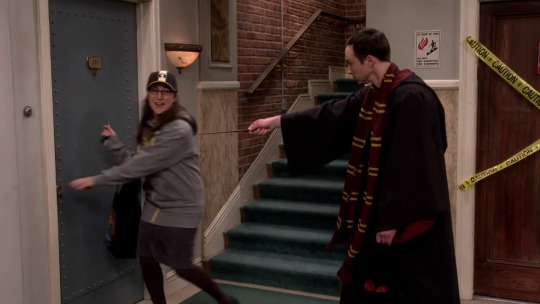

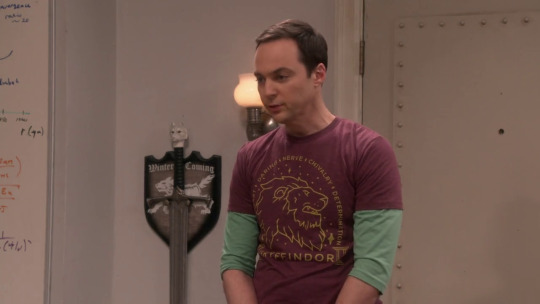
Amy and Sheldon in their HP merch through the seasons. Amy is a Hufflepuff (confirmed 2 times) and Sheldon is a Gryffindor (confirmed 3 times). I think it's a nice touch that the writers didn't go "their nerds lol their obvs Ravenclaws".
I think it sort of fits? Amy is very unpretentious and loyal, Sheldon has a kind of bravado about him. Both have, in each their own way, a strong sense of fairness. It's a small detail, but I like that they don't get reduced to their intellect.
#sheldon cooper#amy farrah fowler#shamy#harry potter#gryffindor#hufflepuff#going through my vlc screenshots#more cynical explanation:#the studio got paid to put them in different houses#to showcase more of the merch#in the last season the main cast received $1 million per episode EACH#(until they reduced their own pay so their co-stars would get more if that story is to be believed)#there was a LOT of money involved#i just assume the studio got paid for product placements like this#tbbt#the big bang theory
145 notes
·
View notes
Text
might get better...if I have time before I have to quit art
So it's time to confess. I'm kind of bummed by how AX2019 artist alley turned out.
Sure, I didn't get into the red, I was able to have a good time, and nothing traumatic happened. But I was really disappointed in my sales. They defied YEARS of trends! And I thought I was finally going to be able to justify this artist life of mine...But now it seems to be reaffirming my growing hunch to quit. ;_;
Though granted, last year set a pretty high bar. Those sales were awesome, and primarily driven by my Wayfinders and having finally made an excessive amount of Wayfinder stock. For years, I've depended primarily on my Wayfinder fan-crafts for sales. Every year, they sell-out...except for last year when I miraculously managed to make 21 Wayfinders stock and actually have leftovers after the con. O.O But this year, AX2019, I think I only sold 2 Wayfinders. 2 out of 15. ;_; I thought that if I just keep making more of them or finally make enough to meet customer demand, then I could finally dictate a reasonable amount of sales. Maybe enough to justify making a living as an artist. I really needed more income in my life, and I thought that if I just kept making more Wayfinders in excessive stocks, then I could get more financial security. And AX2018 seemed to prove that. So I studied my past sales trends, predicted how much stock I would need, and virtually met those goals. But this year, they not only didn't get sold-out, but they were BARELY selling.
Maybe it was my lack of marketing. Last year I went in hard with posting to my art studio blog. I posted progress, almost daily, and constantly reminded people what I was making. But I found out a little while after AX2018 that someone found one of my Wayfinders too fragile and they were very dissatisfied. I was so ashamed that I ran away from my art studio blog from then on. I stopped trying to make that type of Wayfinder. I stopped posting daily progress about my other projects. I couldn't just replace their item or repair it through the mail because I don't have a mailing system or online shop set up. And now I was even more reluctant to try any onlie interactions or store. Maybe if people were better reminded that I was going to be in AX2019 artist alley, where I was, or what I was offering, I could have gotten more sales.
Suddenly being in ailse G didn't help either. For the past 2 years, I had been in ailse K. I don't know why. I don't know why I was suddenly in ailse G for AX2019 either. Maybe I was later than usual in filling my Artist Alley Form? Probably. But I got one passing customer's comment being surprised to find me in ailse G. Maybe they had become accustomed to looking for me in K? Maybe they just assumed I wasn't at AX2019, when they didn't see me in K? I wouldn't put it past the customer base. I remember memorizing booths' placements in San Diego Comic Con. And I've had customers prove that attendees have a very askewed memory of time when it comes to what's in artist alley. Maybe my table location change was too much for them. (I mean, I may personally go up and down the aisles, systematically checking every table's stock for that one artist who I don't even know if they're here---and I found her too! Under a DIFFERENT name!---but not everyone is as obsessive as me. First rule of design is to accomodate human tendency to go for what's easy. And considering how overwhelming an anime convention is, I can't blame anyone. In fact, I willing and welcome to assist through that.)
My AX2019 Wayfinders were barely selling, especially in proportion to how much time I wasted to make them. ;_; I wasted so much time making those Wayfinders, that I've honestly long-since lost a lot of excitement over. There are so many other things I want to make instead.
So it's fortunate that this year, I impusively sacrificed a lot of my Wayfinder time in exchange for several new projects. ^.^ And 4 of those projects either sold-out or sold-out a large portion of stock: Joker-Kirby figurine charms, Smash Bros invitations, pompom Wooloo charms. Sure, no one bought any Ryuji (birthday) charms, and the Persona 5 x Neko Atsume bookmarkers barely sold, regardless of how much time and love I had for both of those also-impulsive, last-minute projects. But still, the Smash invitations, Wooloos, and Joker-Kirby figurines were VERY well received. ^-^ And I loved watching people squee over them---Actually, I found that these demographics don't really "squee". The Wayfinder fangirls "squee"'ed. The Smash Bros and Pokemon fans are more like "Duuuude! Look at that! Oh man!". LOL Still great enthusiasm. ^___^
And they were less physically and mentally harrowing to make than Wayfinders. For years now, I had gotten sick of Wayfinder-making eating up ALL my time, only to come out with one completed item per day---or every TWO DAYS. It was DEVASTATING to screw up a sculpt or blend and need even more hours to fix---that I couldn't really get paid for because no one wants to pay more than $70 (except for the Sora Wayfinders, but those had proven too delicate to make more of without a new packaging strategy that I haven't figured out how to source economically yet). Additionally, there's all the physical strain to make those Skinner Blends. I'm no longer that 20-something who did 39 push-ups every day and swordswings and ballet exercises and had such full-body athleticism that I was visibly fit! My arms get TIRED now. x_x; Plus the frustration with how bad I am at Skinner Blends...It takes me at least 2 hours to make them. Meanwhile, YouTube crafters are doing them in 12 minutes. x___x;;;;; I can make excuses about how they're not making slabs as thick as mine, or their clay must be better/expensive brands, or they're using motorized pasta machines and I couldn't even properly clean mine before it broke. I was in a constant battle of perfecting a blend or a sculpt, and always being disappointed in myself for not being faster or getting too tired to work for 7 more hours. ;_; And even more, I was sad that Wayfinders left me so exhausted that I didn't have the time to make anything new. I was tired of Wayfinders. They still looked pretty enough for me to take pride in and I had perfected my process enough by now to bolster my confidence. But I wanted to make more things, damnit!
I had been waiting for years, for someone else in Anime Expo artist alley to give me competition in Wayfinders, so I could have an excuse to focus on other things. So I wouldn't feel obligated anymore to be the only provider. Yes, I depended on Wayfinders for the bulk of my sales, but that was the reason why I wished for competition to give me an excuse to branch away from them. But now that even my Wayfinder sales are waning, maybe this is excuse enough.
The good sales on my new products actually made me feel better about working on new projects and making less Wayfindersfrom now on. And people really liked my new, crazy, weird ideas! ;U; They really liked them! ;u; And what's more, they liked my figurine sculptures. I feel really encouraged now to make more figurines, more 3-dimensional characters in clay. Every year I make all these charms from abstract symbols, representing characters. And _I_ feel very good about them, but they never sell. Whether it's my Joker mask charms or Ryuji ZOMG/Skull mask charms, or any other past ideas I've had. I was so excited for fans of those characters, like me, to also have such things...Only to find that no one cared. No one cares about representatives of their favorite characters. This year I finally learned that people want their actual favorite characters. ...Well, I had known that for a while, but I had no confidence in my character sculptures. That's why I stuck to just sculpting symbols representing favorite characters. It was subtle, and I thought some people would go for more abstract badges of fandom. The symbolic items just don't sell, and I think it's time for me to branch out into actually sculpting characters. I was always afraid because I'm terrible with human anatomy, but sculpting Kirby proved that I don't have to stay away from character sculpting just because of that. And maybe I can work on my human sculpting and actually make competent human character figurines for my next artist alley. *o* AX2019 proved they care about my figurine sculptures! *O*! And my Super Smash Bros invitations! And my pompom Wooloos! ;U;
Actually, the good sales on these less physically strenuous projects like the Smash invitation and the pompom Wooloo, reminded me: my paopu fruit plushies and pompom Moogles also sell well. Every year, I have to stock up as much as I can, because those are reliable sellers. I just don't have to think about them as much as my Wayfinders because they don't become these complex, harrowing projects, eating all my time for so little. Maybe I should make more simple projects. I should stop making items that take 7 hours or 2 days to complete just 1 project. I should focus more on the little $10 thing that don't take more than 3 hours to make...Because people actually buy those more! o_O Maybe it's just the $30 cut-off price point or maybe it's because even short projects like those are cute enough to sell... But I should focus more on that, if they've already proven effective for sales. In addition to being better for my physical and mental health.
1 note
·
View note
Text
3 strategic goals SEO consultants should fulfill
this tool is not for amateurs newbies don't click this
What is the benefit of an SEO strategy? This is a question I get asked quite frequently — and one that I usually have to answer more than once. While many business owners and companies accept the need for SEO, many are still confused or mystified by what SEO really provides. Being able to prove ROI to clients or your boss is essential to success and maintaining a good relationship.
In this post, I want to cover three essential goals you can fulfill with an SEO strategy: visibility, traffic and ROI. I will explain how these three goals create a positive impact and how you can show these results to the decision-makers.
Visibility
The first goal SEO consultants can fulfill is increased online brand visibility. Consumers assume that top placement in the search rankings is a “stamp of approval” for the brand. While we know that this is not always the case, many searchers interpret high rank as a brand endorsement.
Making sure that you have a plan of action to increase the organic search exposure for branded keywords is extremely important. Just to make sure we are all on the same page about branded terms, here is a good definition: branded keywords are the search words or phrases that include the brand name or a variation of the brand name. While branded terms typically drive traffic from people who have already heard of your company, they are still important.
The goal of SEO is not just to protect your brand; it’s also about increasing the visibility of your brand within your targeted niche. As you can probably guess, this is where non-branded terms are essential. While I won’t get into keyword research, you do want to make sure that your target terms are specific to your core business.
Tracking visibility
Tracking your target keyword terms can deliver a ton of insight. While I do caution you not to obsess over rankings, it is important to know where you stand and which direction you’re moving. Being able to send these reports to your management team or clients can also help build trust.
To get started, make sure you have a list of your branded and non-branded terms that you want to track. There are a number of tools you can use to track your ranking, some free and some paid. As you can guess, the free tools will have some restrictions but can still get the job done.
One great free option is SERPs’ Rank Checker. They allow you to track by geolocation, search engine and device. The free version won’t let you keep a record of position history, so it will be important for you to save all your data in a spreadsheet for reporting over time.
Using a paid tool gives you a lot more flexibility as well as ranking history. Many enterprise- and professional-level SEO tools do have rank trackers built in and allow you to see you ranking history over time. The benefit of these tools is that you have all your data in one location, and you can report the success of your SEO efforts when it comes to visibility much more efficiently.
Website traffic
While “build it and they will come” sounds like a good mantra, the fact is, it’s dead wrong. Just having a website is not enough. That’s like opening a business on a road with little to no traffic and expecting people will just “find you.” Great SEO can deliver targeted, relevant traffic to your website.
It’s the goal of an SEO strategy to bring new prospects to your website — people who would otherwise never know that you even existed. Experienced search professionals will take the time to understand not just your products, services and business goals, but also the needs of the audience you are trying to reach.
I’ve worked with some companies that had done a less-than-adequate job of telling the population about what they provide. By aligning their on-site and off-site SEO activities to promote their services to their targeted audiences, we were able to bring prospects to their site who never knew they provided those services.
Tracking traffic
While traffic is just part of the sales and growth equation, it plays a significant role. Many site owners need reminders of the power of traffic. Giving your manager or client updates on their traffic and helping them understand its role in the overall success of sales and marketing can be difficult, but it’s not impossible.
Google Analytics and Data Studio are great free tools that can help you monitor and report the success of your SEO campaigns to your clients. When reporting on traffic, make sure you don’t overwhelm them with data. Never report more than seven KPIs — any more than that, and they will get overlooked. Here are a few KPIs we cover in our SEO success reports:
Sessions.
Users.
Page views.
Pages per session.
Average session duration.
Bounce rate.
Delivering ROI
Companies that invest in marketing demand ROI. If they can’t see or validate the return on their investment, they will stop investing. But determining ROI is not so cut-and-dried. Each business has its own set of goals, and all SEO activities need to align with them.
Some of the goals that typically cross all businesses are sales and leads. Being able to show how your SEO efforts have played a role in these requires appropriate tracking. Again, Google Analytics can be an excellent tool for this. Using the “goals” function, you can measure the impact of your efforts and then report your findings using Data Studio.
The goal of SEO is not just to drive traffic; it is to drive targeted traffic that takes action. When sales numbers go up, people tend to forget how they got there. This is why being able to show your results will help you continue to receive buy-in.
SEO can provide a number of benefits to site owners and organizations. From generating more buzz around your brand and growing your online visibility to increasing your traffic and driving conversions, search is one of the most cost-effective marketing tactics you can use today. By working on delivering on the goals above, you’ll be able to prove your worth and help those you work with (and for) understand the power of search.
This is another great pure SEO spam tool that still works in 2017
from BHSEO GUY's Feed http://ift.tt/2ignVuW
via IFTTT
0 notes
Text
LFS STUDENT TIPS | Ju Shardlow
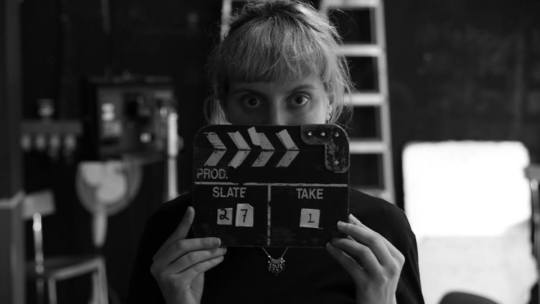
Photo Credit: Franco Volpi
Like many people in the industry, current London Film School (LFS) student Ju Shardlow graduated in a subject unrelated to film, doing journalism and literary jobs here and there for a year before finally deciding to go into film and TV. Shardlow will graduate later this year from The London Film School’s Masters in Filmmaking programme. "I'd done lots of theatre stuff at uni but there wasn't really any media studies, so I decided that I wanted to go and maybe get a work experience placement.” After doing exactly just that in a script production company, Shardlow went on to production runner, production assistant and then runner research assistant, working her way up the ladder.
During this time, she gained experience with organisations such as Hartswood Films, makers of SHERLOCK, while working at Teddington and Shepperton studios. "I got my first job with the BBC in 2012 on The Culture Show and worked there for three years or so as a junior researcher in documentaries. I was self-shooting, learning how to do camera work and then from that went to the LFS.”
Shardlow took time out of her extremely busy schedule to meet up with screenwriter Sophie McVeigh, who wanted to find out more about Sharlow’s journey to The London Film School, only to discover that she had many more strings to her bow than had been anticipated.
Sophie McVeigh (S.M): How did you go about getting your first work experience position?
Ju Shardlow (J.S): It was weird actually because I got a message from my sister saying there was someone from a TV production company at a house party and I was in bed! She was talking about how she couldn't find an intern so I got out of bed, got dressed and then I went to this party at midnight and was like, “Hello, nice to meet you!” There's a way of doing it, [with] that eagerness, instead of assuming that you deserve something.
S.M: How did you go from that to paid positions?
J.S: I got into quite a small development company and then from that you have to just make yourself really invaluable. I'm quite proactive, so I created a role for myself there. Anyone who is averse to making teas and coffees, sorry - give up and go home. And then within that network of research and directing and producing at the BBC, everybody knows each other if you go from project to project. So I think I did 11 shows back to back with the BBC without taking a break. I must have been at home for a week before I got a phone call saying “Would you like to come down for this production?”
S.M: What made you decide to come to LFS?
J.S: With the BBC you can work there for two and a half years before they make you permanent staff. So they're encouraging you to either go freelance or come back on a directors level. I basically wanted to do bits of the production side of it and self-shooting but I realised that I didn't really know as much about cameras and planning my own shoots as I thought I did. So I wanted to go and learn more of the technical side of things. I never came to LFS to be a fiction director. It was always to come and learn how to effectively light and create my own set ups so that I could go and self-shoot.

S.M: What would you say is the most valuable thing that you've gained from your time at LFS?
J.S: Knowing how to manage personalities is really important. People come from all over the world with all of their different backgrounds in film. Also, for work, generally when I show up to places to go and film, it will be, like, ten men from different major press organizations: CNN, the Guardian, ITV, Press Association, Vice. There are very very few female camera operators in the British press. But at LFS there's an approach of equality of opportunity in gender amongst the students. It's a really refreshing thing to see. You realise that there are loads of really capable women and some of them are better than the guys a lot of the time as well.

S.M: You've also started your own production company …
J.S: It's a small production company, me and my friend from university and also an editor friend. Julia Hart and I just recently shot in East London for a week, and then we give them to Trace, she's a professional editor with years of BBC experience... It's kind of a mixture between NFTS, LFS, [and] our VFX person is someone from the BBC. The film we shot this year was called KID GLOVES, but the one that's probably done the best was EMMA, CHANGE THE LOCKS, which was last year. That's now screening in the BFI Future Film Festival.
S.M: Starring Olivia Williams. How did she end up getting involved?
J.S: She became became involved through the director. So effectively it was a mixture of professionals, new people and the students at NFTS. I wish, actually, that I'd shot that after I'd been to LFS so I could understand what all those grip clamps were, and what the sparks do, things like that. Having a knowledge of all those roles through being at LFS definitely helps you as a producer.
S.M: How did you go about making contacts outside of the LFS while you were studying?
J.S: I think it was just persistence! I must have gone the whole summer before I applied to LFS just sending my CV off 20 times a day to places and not getting anything. Just constantly trying to pick up with older connections. I was sending it to development and production companies. I was contacting those people to see if they knew anybody and asking them to keep an ear to the ground, “Even if you need anybody to come along for free for a day.” I drove up to Birmingham for a day to second camera a BBC documentary while studying. I was driving back with a million pounds of camera equipment back through Oxford Circus then getting up for Term 1 the next day.

There are a couple of really good networking things as well. Like BAFTA Crew that I got involved in through working in TV. That's an amazing networking opportunity. Women in Film and Television have a really good networking group. More recently for women: Organisers for Gender Equality in Film, Women on Docs, Feminist Film Collectives. Don't let anyone bash you for all-female crews or networking societies. They're likely to be the same people that ask "Why isn't there an International Men's Day?" You do honestly meet people. Sign up to loads of stuff in London and don't be ashamed to contact people back.
S.M: How does BAFTA Crew work?
J.S: If you have a certain number of TV and film credits and you've worked in the TV industry for a year to two years then you're eligible to apply and they select 200 people a year, across programming, development, game making, research, camera work, everything. And you can apply for a specific strand – I went in for camera operating and production management. Effectively it's open access to loads of master classes, workshops, talks and lectures from BAFTA professionals. And they have drinks after which is a really good place to meet people! If you go on the BAFTA website and sign up to any of their events and talks, they have events all through the year.
S.M: You're using Kickstarter at the moment to help fund 23 BLONDE. How's that going?
J.S: We're going to use it for post production. I think LFS does a Kickstarter course in term six which I’d recommend everybody goes to because Kickstarter is going to be so important for people, especially for their graduation films. A lot of people use it but in a half-arsed way just thinking that friends and family will give them money and that that is its limit. There was someone who graduated a couple of years ago called Christine Sherwood who is an amazing producer and is really good at all that social media strategy, fundraising and Kickstarter. She basically told me to get on stuff as early as possible and create a buzz around your film before you do it, so you already have pitches, you already have footage, quotes, you've already made your press pack, things like that, so that when you go into Kickstarter you can be like: “We've made this and we're going to raise money for post-production, this is how professional it looks.”
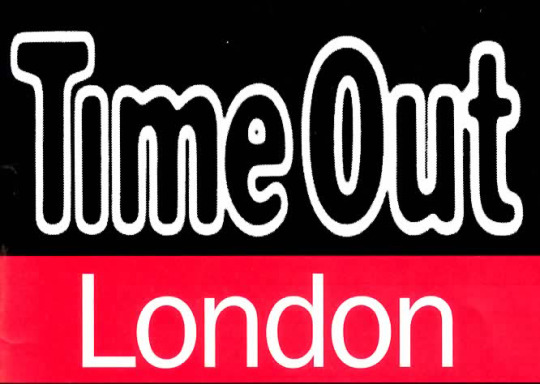
S.M: And you've recently started working for Time Out…
J.S: I'm video producer at Time Out. I basically commission, produce, shoot and edit video content. I've been there for 6 months and it's growing rapidly. We had 11 million video views this month, and have been nominated for a media award in New York with really big players like Time, National Geographic and Condé Nast. They wanted somebody who had demonstrated the ability to go and shoot and do camera work but also had the producer side. I think definitely writing down all those camera skills from LFS, saying that you can operate all those cameras and that you've been on this many shoots, made them say “Oh OK. You can do this amount of work because we know that (the course) is quite hectic,” as well as a knowledge of London, which Documentary Term 3 at least forces you into having, and the ability to throw yourself into unpredictable situations with little planning.
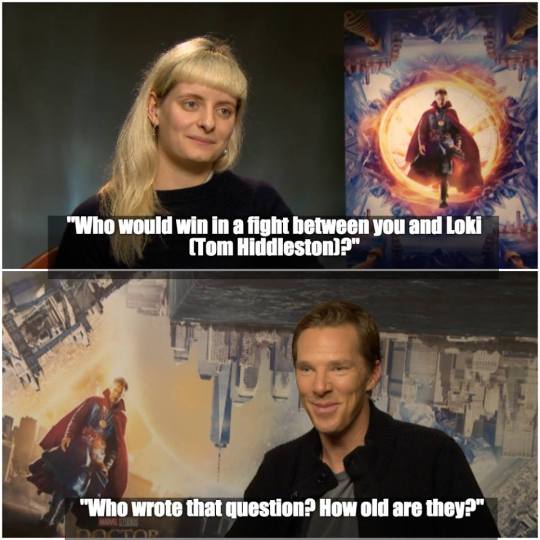
S.M: You're also working with Facebook Live. Could you tell us about that?
J.S: Facebook Live is something that we occasionally use at Time Out. You can do it over your phone or with a plug-in to an ENG camera. I've interviewed some really interesting people though: the Star Wars cast, Benedict Cumberbatch, Louis Theroux, Sigourney Weaver, Bill Nighy…
Facebook and Instagram are really big platforms for video and they're really accessible content. Look how big Instagram stories is becoming. In 2017, 85% of Americans will get nearly ALL their news content from Facebook - that's terrifying but it also gives you a responsibility. We live in an era of fake news, glib reporting and cat videos, but also one where people regularly rely on informing themselves of today's world via video. Even if you make a short fiction or documentary at LFS, you are projecting something you feel is necessary for the world to know in a video format: gender issues, social mobility, loneliness, crime. What I do is just another extension of that: making something entertaining yet informative, and digestible. For a lot of the profiles and news videos we're telling stories with the camera in 30 seconds, for which I always think of LFS staff Peter Gordon or Jaime Estrada-Torres going "What shots are necessary to tell your story?!"
Click here for an example of Shardlow’s work for Time Out London.
Interviewer: Sophie McVeigh
#when alumni convene#timeoutlondon#facebooklive#work experience#production company#bbc#producer#bafta crew#kickstarter#filmmaking#timeout
0 notes